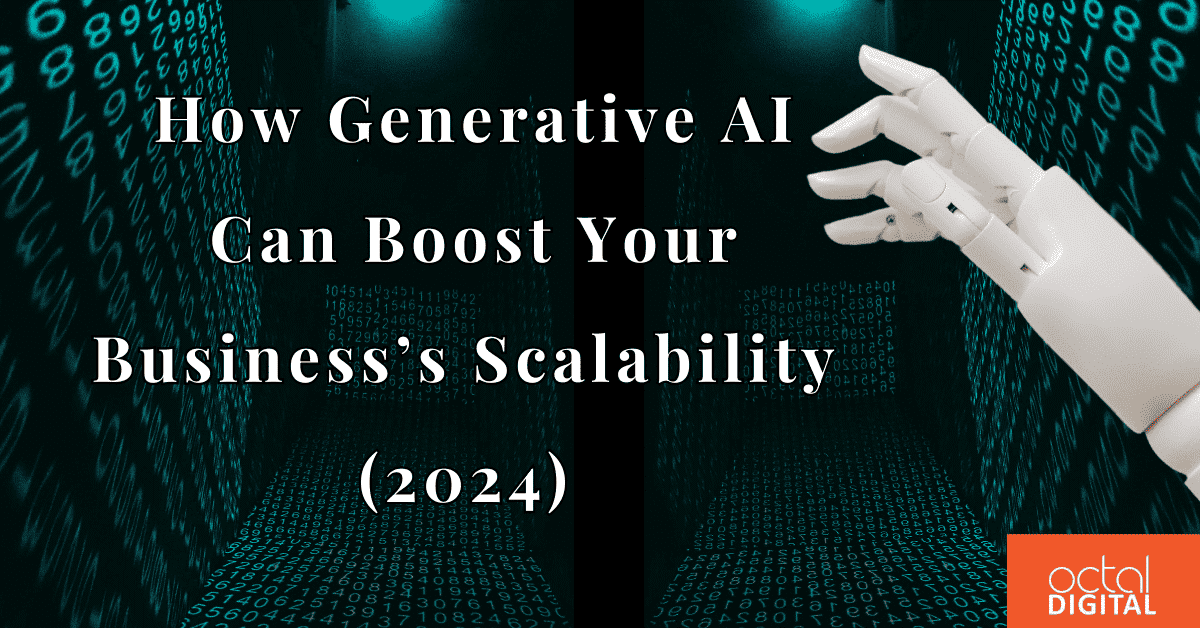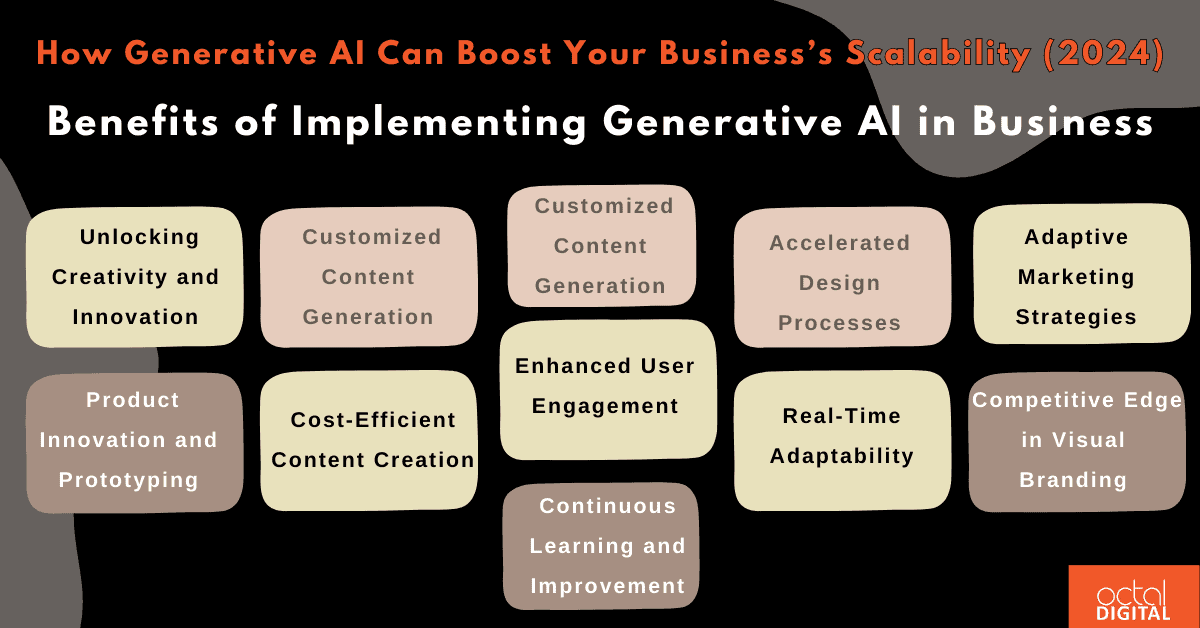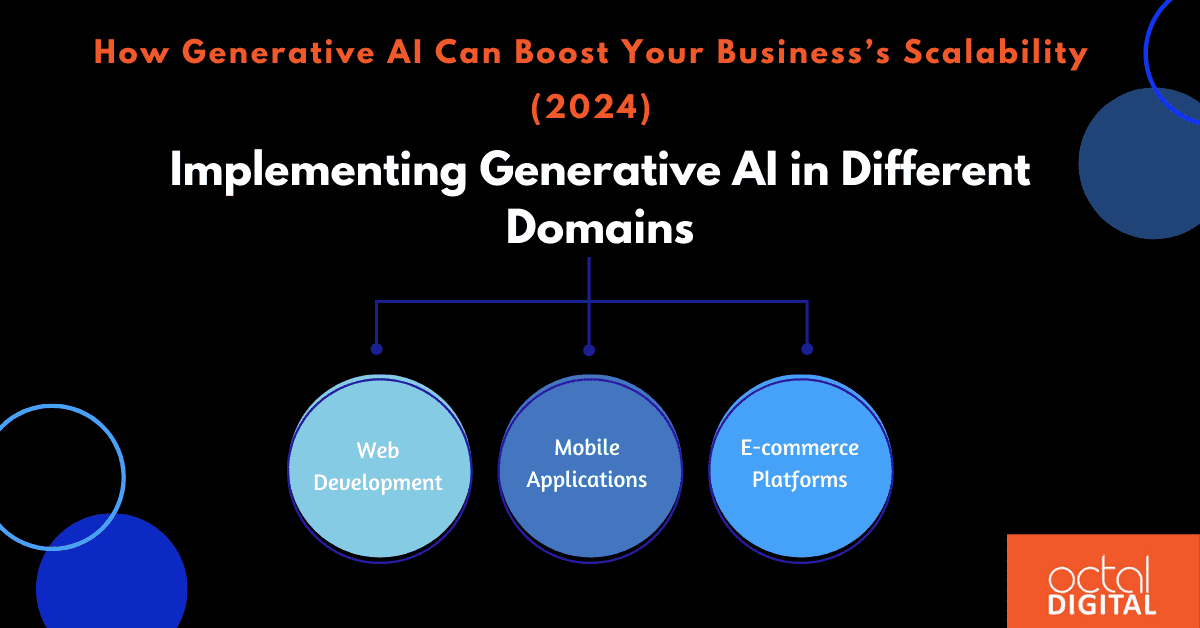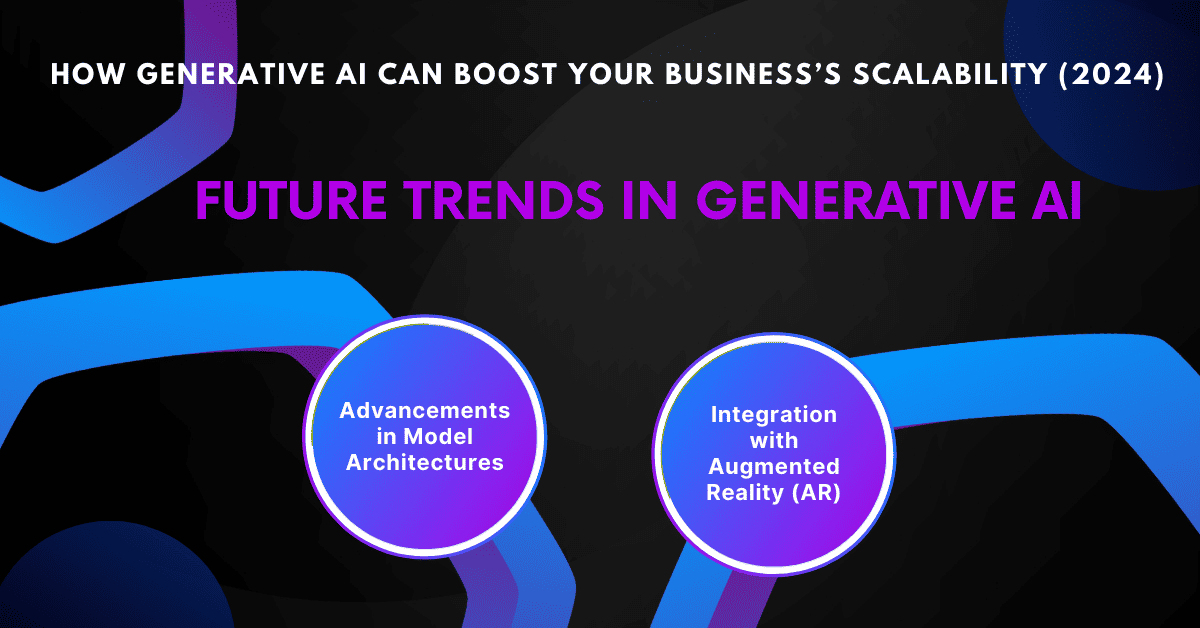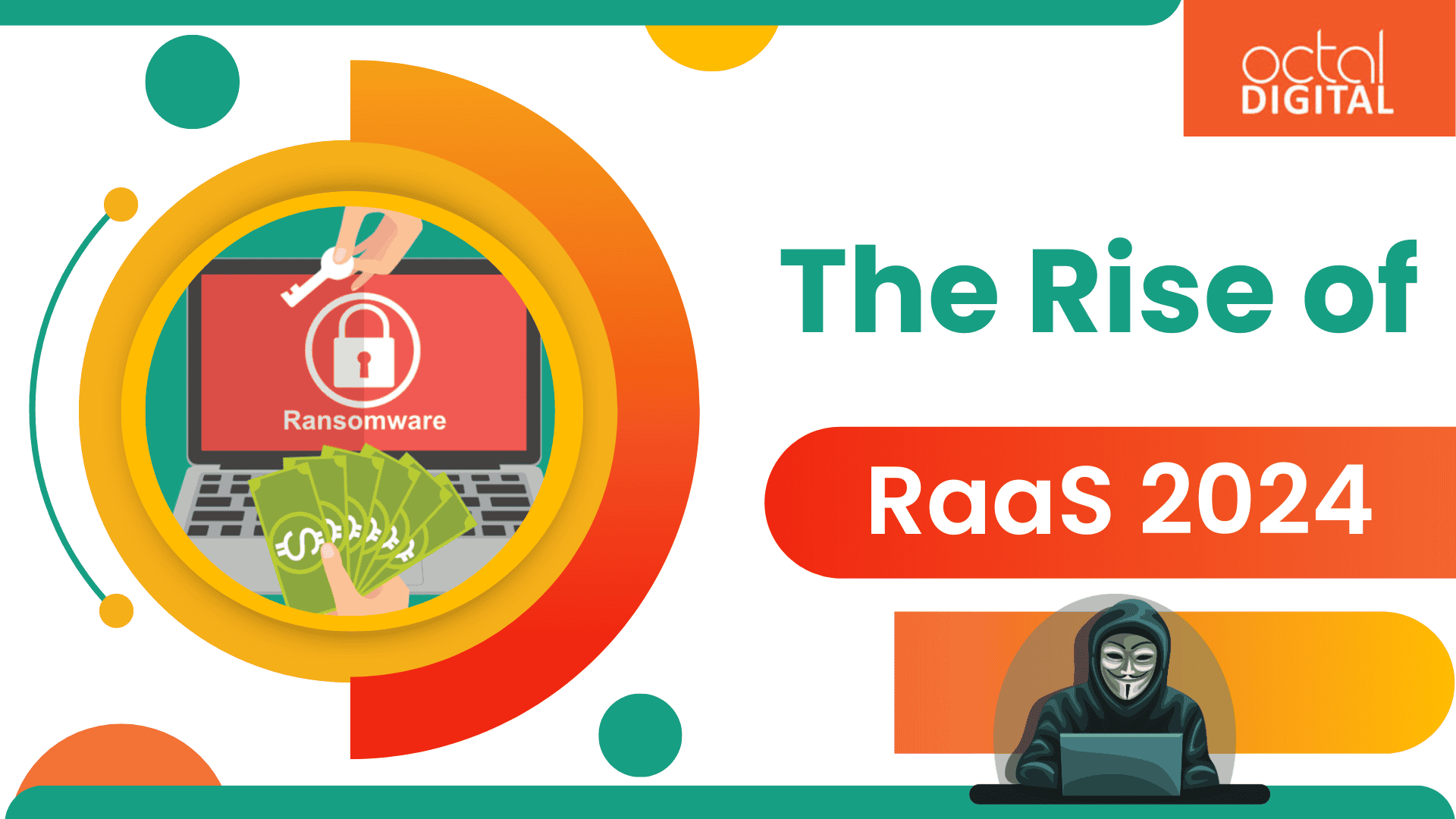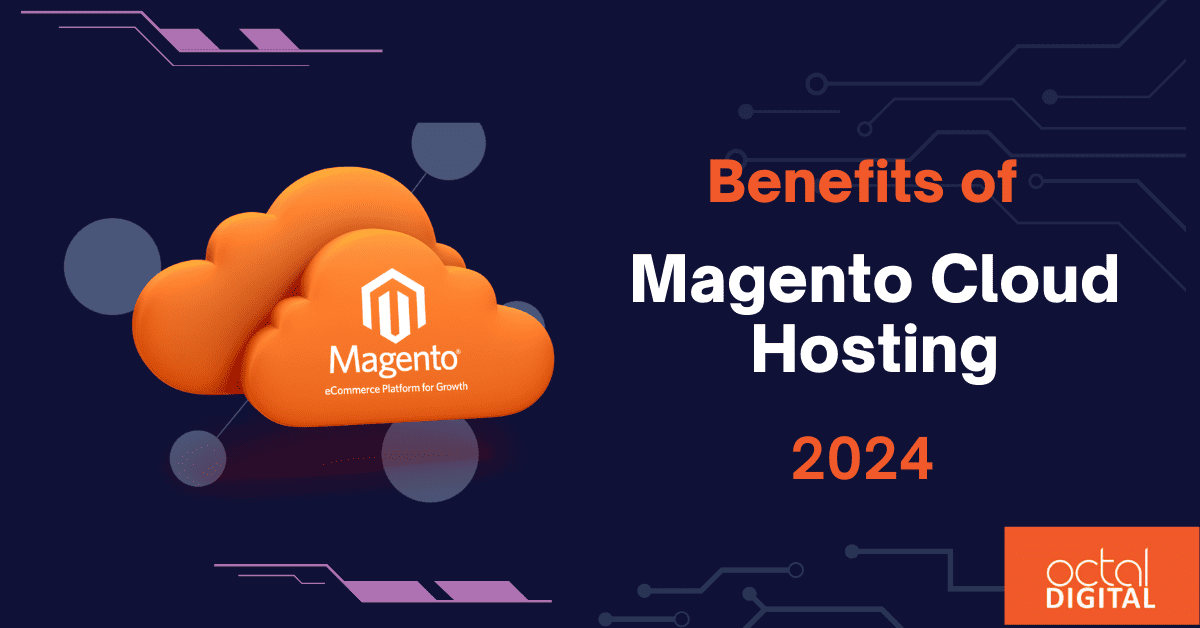Generative AI, represents a subset of artificial intelligence dedicated to the creation of content creation. At its core are sophisticated algorithms designed to autonomously generate data that mirrors, and in some cases, indistinguishably mimics real-world data. This spans the creation of images, text, and diverse forms of content. Today we are going to explore “How Generative AI Can Boost Your Business’s Scalability” in 2024.
What is Generative AI?
Generative AI stands as a technological cornerstone, elevating user experiences and catalyzing innovation. Its unique capability to generate creative and realistic content introduces a paradigm shift across various applications. Generative AI refers to a class of artificial intelligence algorithms and models designed to generate new content or data. These models are trained on large datasets and can create content such as images, text, audio, or even video. Generative AI is often associated with creativity and the ability to produce creative and diverse outputs.
Benefits of Implementing Generative AI in Business
A. Unlocking Creativity and Innovation
Generative AI serves as a transformative force, boosts new levels of creativity, and fosters a culture of innovation within a business. By leveraging sophisticated algorithms and machine learning, generative AI empowers teams to explore uncharted potential in content creation, pushing the boundaries of what is conventionally possible.
Key Features and Benefits:
- Diverse Content Exploration: Generative AI encourages experimentation with diverse content types, enabling teams to explore new ideas and creative concepts that might not have been envisioned through traditional methods.
- Idea Generation Support: Businesses can use generative models as valuable assistants in brainstorming sessions, providing a continuous stream of creative suggestions that spark inspiration and drive ideation.
- Cross-disciplinary Collaboration: The interdisciplinary nature of generative AI encourages collaboration between creative, technical, and business teams, breaking down silos and fostering an environment where diverse perspectives converge.
- Iterative Prototyping: Generative AI facilitates iterative prototyping, allowing teams to quickly generate and evaluate multiple design alternatives, accelerating the innovation process and reducing time-to-market.
B. Customized Content Generation
Generative AI enables businesses to redefine content generation, tailoring outputs to precise specifications. Whether it’s crafting personalized marketing collateral, dynamically generating product descriptions, or infusing unique design elements into digital assets, businesses gain a level of customization that resonates with their target audience.
Key Features and Benefits:
- Personalization at Scale: Businesses can personalize content at scale, creating unique and relevant experiences for individual users or targeted audience segments, thereby increasing engagement and conversion rates.
- Adaptive Messaging: Generative models can adapt messaging based on user preferences, behavior, and real-time interactions, ensuring that the content remains contextually relevant and resonant.
- Localization and Global Appeal: Tailoring content generation to local languages, cultural nuances, and regional preferences becomes seamless, enabling businesses to connect with global audiences on a personalized level.
- Dynamic Brand Storytelling: Generative AI empowers businesses to dynamically tell their brand story by creating varied narratives, adapting tone, and adjusting visual elements, reinforcing brand identity across diverse content.
C. Enhanced User Engagement
The creative outputs of generative AI contribute to elevated user engagement across digital platforms, creating a dynamic and immersive user experience. From visually captivating graphics to personalized content recommendations, businesses can captivate their audience, leading to increased interaction, longer session durations, and improved conversion rates.
Key Features and Benefits:
- Visual Appeal and Retention: AI-generated visuals and interactive elements enhance the visual appeal of websites and applications, capturing user attention and promoting longer engagement periods.
- Personalized Content Recommendations: Generative AI powers personalized content recommendations, increasing the relevance of suggested products, articles, or media, and fostering a deeper connection with users.
- Interactive Conversations: Integrating generative models into chatbots and conversational interfaces enables dynamic and context-aware interactions, making user conversations more engaging, natural, and tailored to individual preferences.
- Gamification and Interactive Elements: Businesses can leverage generative AI to introduce gamification elements or interactive features, providing users with a more immersive and enjoyable experience.
D. Accelerated Design Processes
In fields such as graphic design and user interface development, generative AI acts as a powerful assistant, accelerating design processes and augmenting the creative workflow. By suggesting design elements, generating variations, and automating repetitive tasks, businesses can optimize workflows, allowing teams to focus on high-level creative decision-making.
Key Features and Benefits:
- Design Element Suggestions: Generative AI assists designers by suggesting creative design elements, helping teams explore diverse visual styles and enhance the overall aesthetics of digital assets.
- Automated Variation Generation: Designers can automate the generation of design variations, streamlining the exploration of different layouts, color schemes, and visual elements to find the most effective and visually appealing combinations.
- Iterative Prototyping: Generative models facilitate rapid and iterative prototyping, enabling design teams to experiment with multiple design options quickly and efficiently, ultimately leading to more refined and polished final products.
- Workflow Optimization: By automating repetitive design tasks, generative AI optimizes workflows, allowing designers to focus on strategic decision-making, creative ideation, and refining the finer details of the design process.
Elevate your online presence with Octal Digital, an expert WordPress web design company. Our web development services in Houston are designed to transform your brand’s image, creating a website that authentically reflects your vision and engages your target audience. Take the first step towards online success by reaching out to us for a consultation.
E. Adaptive Marketing Strategies
Generative AI equips businesses with the capability to dynamically generate content tailored to current market trends, user preferences, and real-time analytics. This adaptability empowers businesses to stay agile in their marketing strategies, ensuring that the content remains relevant and resonates with the evolving needs of the target audience.
Key Features and Benefits:
- Real-Time Trend Analysis: Generative AI can analyze real-time data to identify emerging trends, allowing businesses to adapt marketing strategies quickly and align content with the latest market demands.
- User-Centric Campaigns: The ability to generate content based on user behavior and preferences enables businesses to create user-centric marketing campaigns that resonate with individual audience segments.
- Dynamic A/B Testing: Generative models facilitate dynamic A/B testing by generating variations of marketing content, enabling businesses to experiment with different approaches and optimize campaign performance in real time.
- Adaptable Messaging: Businesses can adjust marketing messages on the fly, responding to user interactions and feedback, ensuring that promotional content remains relevant, engaging, and aligned with the evolving needs of the audience.
Revolutionize your app’s success! Partner with us, your dedicated app marketing experts. Elevate your downloads, boost user engagement, and dominate the app market. Ready to scale? Let’s launch your app to new heights together.
F. Product Innovation and Prototyping
Generative AI plays a pivotal role in fostering product innovation by facilitating the generation of design alternatives and variations. This capability empowers businesses to explore a myriad of possibilities, streamline the ideation phase, and expedite the product development life cycle.
Key Features and Benefits:
- Idea Generation and Exploration: Generative AI assists in the generation of innovative product ideas by providing a constant stream of design alternatives, enabling teams to explore new concepts and features.
- Iterative Prototyping: The iterative prototyping process is enhanced, allowing businesses to quickly generate and evaluate multiple design variations, accelerating the refinement of product designs and reducing time-to-market.
- User-Centric Features: Businesses can use generative AI to generate features based on user preferences and feedback, ensuring that product innovations align with the needs and expectations of the target audience.
- Streamlined Design Collaboration: The collaborative nature of generative AI fosters seamless communication and collaboration among product development teams, designers, and stakeholders, ensuring that everyone is aligned on the creative direction and innovative features.
G. Cost-Efficient Content Creation
Generative AI offers a cost-efficient alternative to traditional content creation methods. Automated content generation reduces the reliance on human resources for routine tasks, allowing businesses to allocate resources more strategically and focus human creativity on tasks that require a nuanced touch.
Key Features and Benefits:
- Automated Routine Tasks: Generative AI automates repetitive content creation tasks, reducing the need for manual intervention in areas such as content formatting, image generation, and basic writing tasks.
- Resource Optimization: Businesses can allocate human resources strategically, directing creative talents toward tasks that require critical thinking, strategic decision-making, and a deep understanding of brand identity.
- Scalability: Generative AI scales easily to handle large volumes of content creation, making it a cost-effective solution for businesses with growing content demands, without a linear increase in resource requirements.
- Consistency in Output: The automated nature of generative AI ensures consistency in content output, reducing the likelihood of errors, ensuring brand coherence, and maintaining a high standard of quality across various content types.
H. Personalized User Experiences
By leveraging generative AI for content recommendations and customization, businesses can deliver personalized user experiences. Whether it’s tailoring product suggestions, adapting website layouts, or curating content based on user preferences, personalized experiences enhance customer satisfaction and loyalty.
Key Features and Benefits:
- Dynamic Product Recommendations: Generative AI enables businesses to dynamically recommend products based on user behavior, purchase history, and preferences, creating a personalized shopping experience.
- Adaptive Website Layouts: Websites can adapt their layouts dynamically based on user preferences, ensuring that users are presented with content and features that align with their interests, leading to increased engagement.
- Tailored Content Experiences: Content curation becomes a dynamic and personalized process, with generative models adjusting the content mix based on individual user preferences, fostering a sense of relevance and connection.
- Improved User Retention: Personalized user experiences contribute to improved user retention by creating a sense of individualized value, and encouraging users to return and engage with the platform consistently.
I. Real-Time Adaptability
Generative AI empowers businesses with real-time adaptability, allowing them to respond dynamically to user interactions, adjust content based on analytics, and generate responses in chatbots. The ability to adapt content on the fly is a powerful asset in the fast-paced digital landscape.
Key Features and Benefits:
- Context-Aware Interactions: Generative AI enables context-aware interactions, ensuring that content and responses are dynamically adjusted based on the user’s current context, preferences, and previous interactions.
- Agile Response to Trends: Businesses can respond promptly to emerging trends by adjusting content strategies and marketing messages in real time, capitalizing on the immediacy of generative AI-driven content generation.
- Optimized User Journeys: The real-time adaptability of generative AI contributes to the optimization of user journeys, ensuring that users are guided through personalized and relevant content at every stage of their interaction with a digital platform.
- Dynamic Chatbot Responses: Chatbots powered by generative AI can generate dynamic and context-aware responses, improving the overall user experience and providing users with accurate and timely information.
J. Competitive Edge in Visual Branding
The creative outputs of generative AI contribute to a unique visual branding identity, providing businesses with a competitive edge in the visual landscape. By incorporating AI-generated visuals that align with their brand personality, businesses can stand out in the market and leave a lasting impression on their audience.
Key Features and Benefits:
- Consistent Brand Aesthetics: Generative AI ensures consistency in brand aesthetics by generating visuals that adhere to predefined brand guidelines, maintaining a cohesive visual identity across various digital touchpoints.
- Adaptive Branding Elements: Businesses can adapt branding elements dynamically based on the context, audience, and platform, ensuring that visual representations align with the evolving nature of digital interactions.
- Unique Visual Assets: AI-generated visuals add a layer of uniqueness to visual branding, providing businesses with the opportunity to differentiate themselves from competitors and create a memorable visual impact on their audience.
- Versatility in Visual Communication: Generative AI allows for the creation of versatile visual communication assets, ranging from social media graphics to website banners, ensuring that businesses can communicate effectively across diverse digital channels.
Learn valuable tips for regular updates and monitoring to ensure optimal performance. Visit Octal Digital’s blog page and explore the latest tech trends!
K. Continuous Learning and Improvement
Generative AI systems continuously learn from user interactions and feedback. This iterative learning process allows businesses to refine and improve the quality of generated content over time, ensuring that the AI adapts to changing user preferences and market dynamics.
Key Features and Benefits:
- User Feedback Integration: Generative AI systems can integrate user feedback loops, allowing businesses to gather insights, identify areas for improvement, and refine the generative models based on real-world user experiences.
- Adaptive Algorithms: The continuous learning capability of generative AI ensures that algorithms adapt to changing patterns, preferences, and trends, leading to improved content generation and greater alignment with user expectations.
- Evolutionary Content Quality: Over time, generative AI systems evolve in their ability to produce high-quality content, reflecting advancements in algorithms, model architectures, and the accumulation of training data.
- Agile Response to User Trends: By leveraging continuous learning, businesses can respond agilely to emerging user trends, ensuring that the generative AI remains relevant and effective in delivering content that resonates with evolving user preferences.
Incorporating generative AI into your business strategy opens the door to a multitude of benefits, from enhancing creativity and user engagement to streamlining processes and staying competitive in a rapidly evolving digital landscape. The strategic adoption of generative AI can be a transformative step toward fostering innovation and achieving a unique and dynamic market presence.
Implementing Generative AI in Different Domains
A. Web Development
1. Background Image Generation
Implementing GANs in web development for dynamic background image generation involves training the model on a dataset of relevant images. The generated images dynamically serve as visually engaging and unique backgrounds for websites, enhancing user experience.
2. Content Creation
Generative models can create unique and contextually relevant content for websites, such as blog articles or product descriptions. Training the model on a diverse dataset of text ensures it can generate coherent and relevant content, offering a creative edge.
3. User Interface Design
Generative AI assists in UI prototyping by providing design suggestions based on the analysis of existing design patterns. This involves leveraging generative models to offer creative ideas and optimizations, streamlining the UI design process.
B. Mobile Applications
1. Image Filters and Augmentation
Generative models enhance image processing in mobile applications by providing unique image filters and data augmentation techniques. By training the model on various filter styles, it can apply them in real-time to enhance user-generated content.
2. Personalized Content Recommendations
Implementing generative models for personalized content recommendations in mobile apps involves training the model on user interaction data. The model can then generate personalized recommendations based on a user’s preferences and behavior, enhancing user engagement.
3. Natural Language Processing (NLP)
Enhancing mobile applications with generative AI in NLP involves training models for tasks like sentiment analysis, chatbots, or language-based interactions. This ensures more natural and context-aware interactions, providing a sophisticated user experience.
C. E-commerce Platforms
1. Product Image Generation
Generative AI can be employed in e-commerce platforms to generate product images or variations. By training the model on a dataset of product images, it can create visually appealing and unique visuals for products, attracting customer attention.
2. Demand Forecasting
Utilizing generative AI for demand forecasting in e-commerce platforms involves training models on historical sales data. The model can then predict future demand patterns, aiding in inventory management and supply chain optimization.
3. Personalized Shopping Experiences
Enhancing e-commerce platforms with generative models for personalized shopping experiences involves analyzing user behavior and preferences. The model can generate personalized product recommendations, improving user engagement and conversion rates.
Embark on a journey to enhance and optimize your Shopify experience with our dedicated team at your side. Whether you’re looking for expert guidance or comprehensive maintenance solutions, we stand ready to elevate your e-commerce platform. Our seasoned professionals are here to provide tailored advice, implement strategic enhancements, and ensure that your Shopify store operates seamlessly.
Examples: Use of Generative AI
A. Netflix: Personalized Content Thumbnails
Netflix employs generative AI to create personalized content thumbnails. The model analyzes user preferences and viewing habits to dynamically generate thumbnails that increase user engagement and content discoverability.
B. Adobe: AI-Driven Design Assistants
Adobe integrates generative models to assist designers in the creative process. This involves using AI to suggest design elements, generate variations, and streamline the design workflow, enhancing overall productivity.
Read More: Best Web Development Backend Frameworks in 2024
Future Trends in Generative AI
A. Advancements in Model Architectures
The field of generative AI continues to evolve with advancements in model architectures. GPT-4 and future iterations promise enhanced creativity, understanding, and capabilities, paving the way for more sophisticated applications.
B. Integration with Augmented Reality (AR)
Generative AI’s integration with Augmented Reality (AR) opens new possibilities for immersive experiences. From AR-based content creation to real-time generation, the synergy between generative AI and AR is poised to redefine interactive applications.
Conclusion
In conclusion, the implementation of generative AI across diverse applications signifies a paradigm shift in how we approach creativity and innovation. The versatility of generative models, as demonstrated in various use cases, underscores their potential to transform digital experiences.
As we move forward, the encouragement of innovation and experimentation with generative AI is paramount. The dynamic nature of this technology invites businesses and developers to explore new possibilities, pushing the boundaries of what is achievable in the realm of AI-driven creativity.
FAQ’s
-
What frameworks or models are commonly used in implementing Generative AI for business applications?
In business applications, OpenAI’s GPT-4 is notable for text and image generation, while TensorFlow and Keras excel in image synthesis using VAEs and GANs. PyTorch is preferred for dynamic computation in tasks like image generation. StyleGAN is popular for creative industries, BERT for language tasks, and CycleGAN for image-to-image translation. ChatGPT is tailored for conversational applications. The choice depends on specific business needs and generative tasks.
-
What’s the fine-tuning process for Generative AI models in a business context, and how businesses can tailor models to specific industry requirements?
Fine-tuning involves adjusting a pre-trained model on specific tasks or domains relevant to a business. In the context of Generative AI, businesses can leverage pre-trained models (e.g., GPT-3) and fine-tune them for industry-specific applications. The process typically involves providing the model with a dataset representative of the business domain and task, adjusting hyperparameters, and training the model on this specialized data. This tailoring ensures that the model becomes adept at generating content, responses, or creative outputs that align with the specific terminology, style, or requirements of the industry, making it a powerful and customized tool for business applications.
